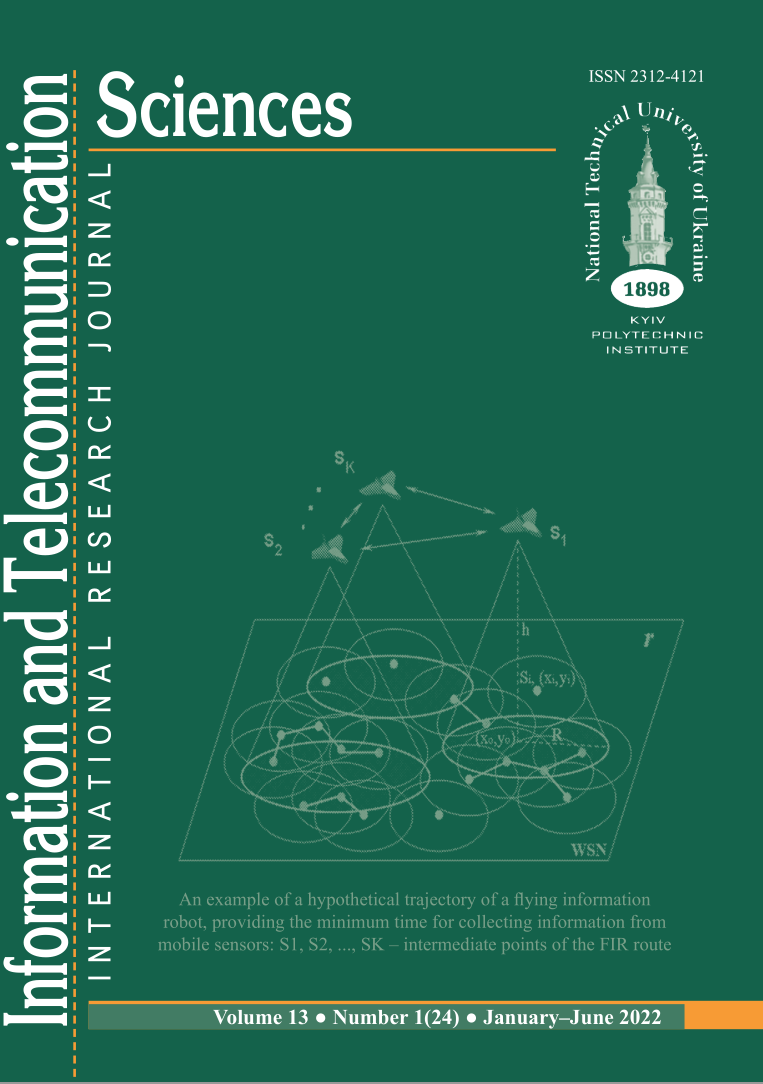IMPLEMENTATION OF MEDICAL MASK RECOGNITION TECHNOLOGY IN REAL TIME USING A VIDEO CAMERA
DOI:
https://doi.org/10.20535/2411-2976.12022.66-69Keywords:
convolutional neural network, detection, recognition, classification, optimization algorithmAbstract
Background. The coronavirus pandemic (COVID-19) has led to a major global health crisis due to the rapid spread of the virus. The World Health Organization has provided guidelines for protection against this disease. One of the effective recommendations is to wear a medical mask in public or crowded places. Involving human resources to monitor how these requirements are met is ineffective. It is necessary to automate the process of determining a properly dressed medical mask in real time using a video camera. The authors have developed an application that effectively copes with this task.
Objective. The purpose of thew paper is the application development of a medical mask recognition in real time using a video camera, adapted for the use in modern Ukrainian reality with high accuracy and low system requirements.
Methods. Analysis of existing analogues in the world, building a model of convolutional neural network, the architecture of which will detect and classify the image obtained from the camcorder in real time, create application architecture, develop a model in Python programming language, application testing.
Results. A convolutional neural network of its own architecture has been created. The use of the Adam algorithm to optimize learning and use binary cross entropy as a cost function is substantiated. The method of face recognition using Haar features has been improved. High rate of convolutional neural network training was obtained: the training set accuracy - 97.46%, the test set accuracy - 97.23%, the cost function value at the training set - 2.37%, the cost function value at the test set - 2.57%. An application consisting of three modules has been developed: a machine learning module, an image processing module, a video camera activation module and a mask recognition device.
Conclusions. The application effectively copes with the task of recognizing the presence of a medical mask in real time. The developed model in comparison with the analogues has a smaller size and simpler architecture without compromising accuracy or speed. The software has been successfully tested on various operating systems and hardware configurations. The application can be used in areas where there is a need to automate the process of determining the presence and accuracy of wearing a medical mask in real time.
References
S. Singh, U. Ahuja, M. Kumar, K. Kumar, M. Sachdeva,
"Face mask detection using YOLOv3 and faster R-CNN models: COVID-19 environment", Multimedia Tools Applications, vol.80, pp. 19753-19768, 2021 https://doi.org/10.1007/s11042-021-10711-8.
A. Chavda, J. Dsouza, S. Badgujar, & A. Damani, "Multi-stage CNN architecture for face mask detection". In 2021 6th International Conference for Convergence in Technology (i2ct), IEEE, 2021, pp. 1-8,
doi: 10.1109/I2CT51068.2021.9418207.
H. Goyal, K. Sidana, C. Singh, A. Jain, S. Jindal, "A real time face mask detection system using convolutional neural network.", Multimedia Tool and Applications., vol. 81(11), pp.14999-15015, 2022.
L. Cuimei, Q. Zhiliang, J. Nan and W. Jianhua, "Human face detection algorithm via Haar cascade classifier combined with three additional classifiers", 2017 13th IEEE International Conference on Electronic Measurement & Instruments (ICEMI), 2017, pp. 483-487.
R. J. Fontana, "Recent System Applications of Short-Pulse Ultra-Wideband (UWB) Technology" IEEE Transactions on Microwave theory and Techniques, vol.52, no. 9, pp. 2087-2103, 2004.
Downloads
Published
How to Cite
Issue
Section
License
Copyright (c) 2022 Dmytro Prochukhan, Mykola Korablev

This work is licensed under a Creative Commons Attribution 4.0 International License.
The ownership of copyright remains with the Authors.
Authors may use their own material in other publications provided that the Journal is acknowledged as the original place of publication and National Technical University of Ukraine “Igor Sikorsky Kyiv Polytechnic Institute” as the Publisher.
ITS articles are published under Creative Commons licence:
- Authors retain copyright and grant the journal right of first publication with the work simultaneously licensed under CC BY 4.0that allows others to share the work with an acknowledgement of the work's authorship and initial publication in this journal.
- Authors are able to enter into separate, additional contractual arrangements for the non-exclusive distribution of the journal's published version of the work (e.g., post it to an institutional repository or publish it in a book), with an acknowledgement of its initial publication in this journal.
- Authors are permitted and encouraged to post their work online (e.g., in institutional repositories or on their website) prior to and during the submission process, as it can lead to productive exchanges, as well as earlier and greater citation of published work.

